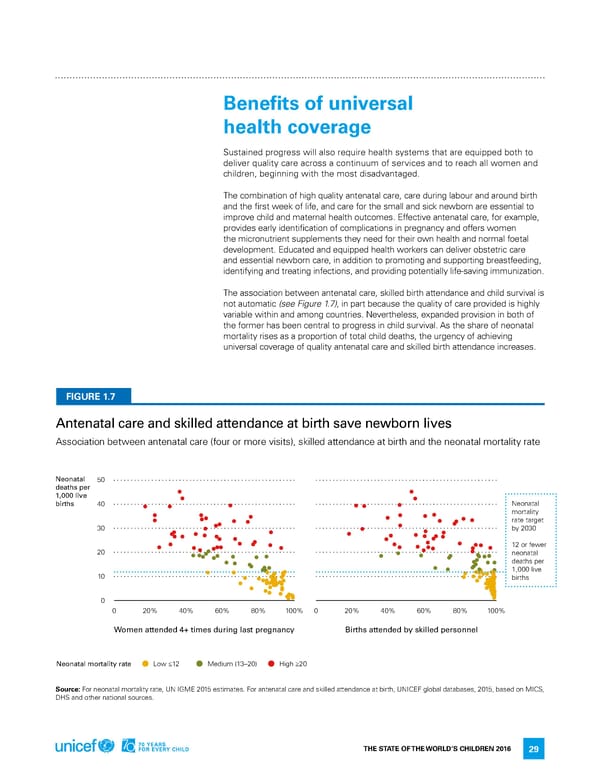Benefits of universal health coverage Sustained progress will also require health systems that are equipped both to deliver quality care across a continuum of services and to reach all women and children, beginning with the most disadvantaged. The combination of high quality antenatal care, care during labour and around birth and the first week of life, and care for the small and sick newborn are essential to improve child and maternal health outcomes. effective antenatal care, for example, provides early identification of complications in pregnancy and offers women the micronutrient supplements they need for their own health and normal foetal development. educated and equipped health workers can deliver obstetric care and essential newborn care, in addition to promoting and supporting breastfeeding, identifying and treating infections, and providing potentially life-saving immunization. The association between antenatal care, skilled birth attendance and child survival is not automatic (see Figure 1.7), in part because the quality of care provided is highly variable within and among countries. nevertheless, expanded provision in both of the former has been central to progress in child survival. as the share of neonatal mortality rises as a proportion of total child deaths, the urgency of achieving universal coverage of quality antenatal care and skilled birth attendance increases. FIGURE 1.7 Antenatal care and skilled attendance at birth save newborn lives association between antenatal care (four or more visits), skilled attendance at birth and the neonatal mortality rate Neonatal 50 deaths per 1,000 live births 40 neonatal mortality rate target 30 by 2030 12 or fewer 20 neonatal deaths per 1,000 live 10 births 0 0 20% 40% 60% 80% 100% 0 20% 40% 60% 80% 100% Women attended 4+ times during last pregnancy Births attended by skilled personnel Neonatal mortality rate low ≤12 Medium (13–20) high ≥20 Source: for neonatal mortality rate, Un iGMe 2015 estimates. for antenatal care and skilled attendance at birth, UniCef global databases, 2015, based on MiCS, dhS and other national sources. The STaTe of The World’S Children 2016 29
 70 Years for Every Child Page 43 Page 45
70 Years for Every Child Page 43 Page 45